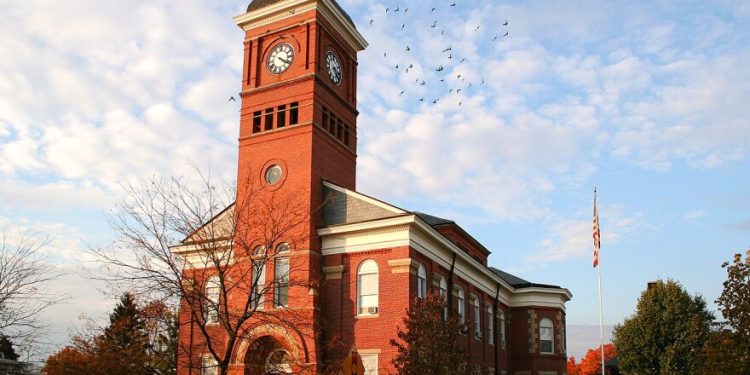In November, Brenda Hart was released from West Central Community Correctional Facility in Marysville, which is located 30 miles north of Columbus. However, her hope of going back home was not fulfilled in the way she expected.
Marengo in Morrow County did not have any available housing options for her. She had to extend her search to Marion, which is a 40-minute drive away, just to find a place to live. Although the homeless shelter in Marion has been of great help in getting her life back on track, she longs to return to her hometown.
Hart shared that being closer to her mom is important to her, as her mom is currently battling lung cancer. She expressed, “That way I can be closer to my mom.”
Every year, approximately 18,000 individuals in Ohio are released from prison and have to reintegrate back into their communities. This process involves finding housing, securing employment, and rebuilding a sense of stability, which can be incredibly challenging. This is especially true for those who are returning to a small town.
According to Tori Dimick, a reentry coordinator at Southeast Healthcare, Morrow County lacks the necessary infrastructure to aid individuals like Hart. However, Dimick is determined to establish a more robust support system for ex-convicts in collaboration with various county organizations and agencies.
A new coalition
Around 30 individuals gathered in a spacious conference room for the inaugural meeting of the Morrow County Reentry Coalition in late January. The participants, including local employment agencies, the county sheriff, legal aid, child support services, and parole officers, shared their perspectives on improving the support system for individuals returning to the county from correctional facilities.
Dimick explained that many residents of Morrow County prefer to support their own community members. Therefore, those who are returning to or currently living in Morrow County and were raised there are the ones who need the most assistance. According to Dimick, these individuals are community members who require the same level of support as everyone else.
At first, Morrow County had plans to collaborate with Delaware County, which was more densely populated. However, it was soon realized that the two counties had different requirements. Their primary focus was to address the unique challenges faced by individuals like Hart when reintegrating into rural areas, such as the limited availability of public transportation. Dimick emphasized the importance of addressing these specific needs in their approach.
Despite being unable to drive, Hart is required to travel to nearby counties for important appointments such as doctor visits, counseling sessions, and mandatory court hearings that can last up to an hour. According to Dimick, meeting parole requirements can be difficult for many of her clients who lack dependable transportation.
Dimick pointed out that it is not feasible to find out about a random drug screening on the same morning.
Rural recidivism
According to the state’s latest data, rural counties, not metropolitan areas, have some of the highest rates of recidivism due to the lack of resources available. This scarcity of resources has a significant impact on the issue.
According to the 2021 report by ODRC, more than 50% of individuals who were released from prison in Darke, Knox, and Logan counties ended up returning within three years.
Ronni Burkes, the deputy director of the office of reentry for the Ohio Department of Rehabilitation, emphasizes the importance of having coalitions in all of Ohio’s 88 counties, particularly in rural areas. According to her, 63 counties already have these coalitions, but the remaining counties need to establish them. In urban areas, there are numerous nonprofits and agencies that can participate in these coalitions. However, rural communities must be more creative and resourceful to ensure the success of these coalitions.
According to Burkes, it’s essential to think creatively when it comes to providing services to those in need. While a food bank may not be available, other organizations may offer food vouchers or similar assistance. It’s important to keep an open mind and consider alternative ways of helping those who require aid, even if it doesn’t align with our typical expectations.
Connecting the community
Morrow’s reentry coalition is a platform that Dimick hopes will shed light on the existing support the community has, such as the involvement of active churches and dedicated volunteer groups.
Her aim is to unify all of them through a resource fair.
Dimick explained that having a resource center where people can connect with various resources all in one day can make them feel less lost and more in control of their situation.
Hart is enthusiastic about the idea. According to her, the county has been forced to rely on neighboring cities such as Marion, Mansfield, and Marysville for support for an extended period of time.
Hart expressed her admiration for Morrow County’s initiative to bring about positive change, stating, “It’s pretty awesome that they’re stepping up.”
She desires to return home, drawn in by the close-knit and hospitable community. However, she requires some assistance to do so.

